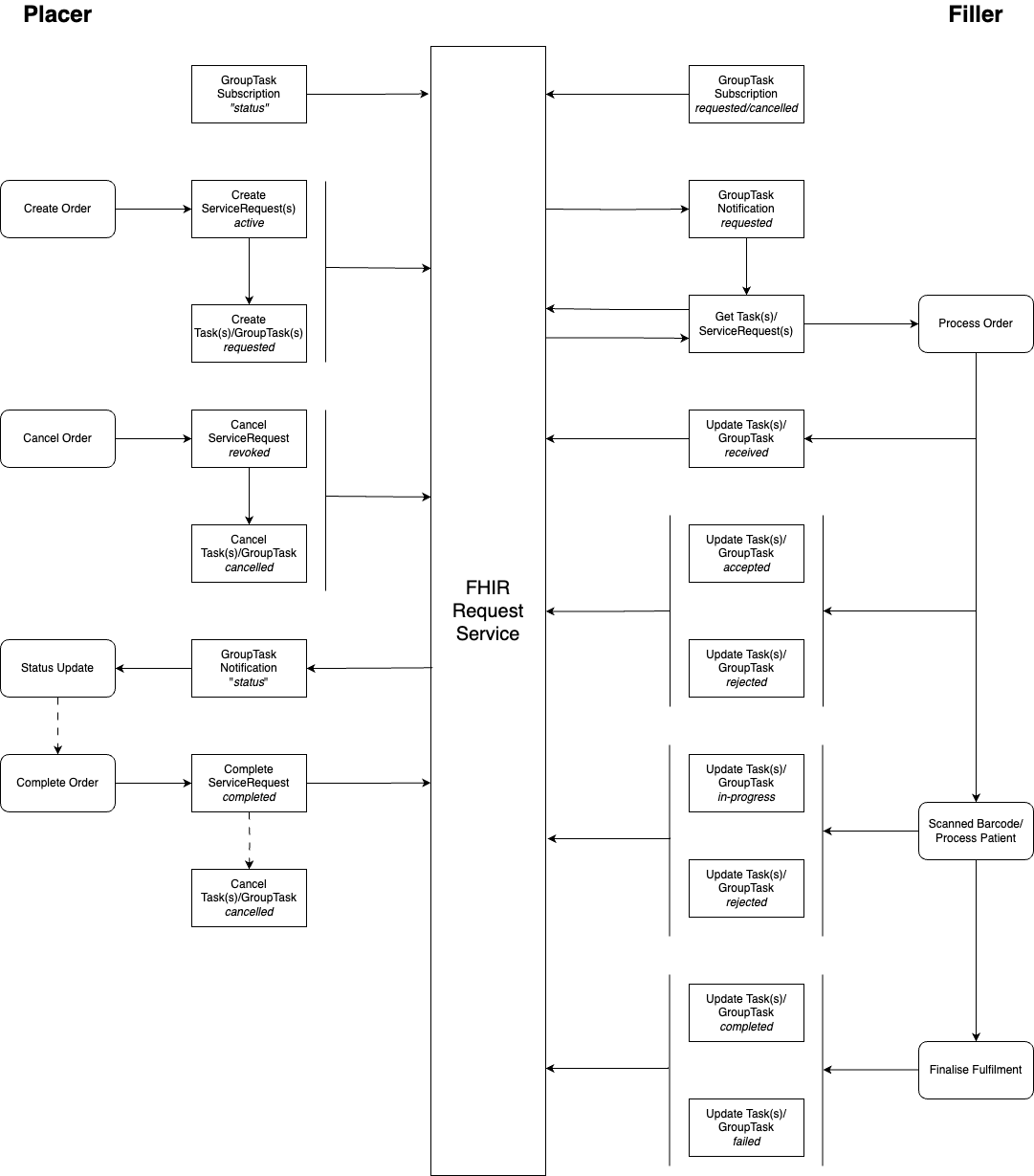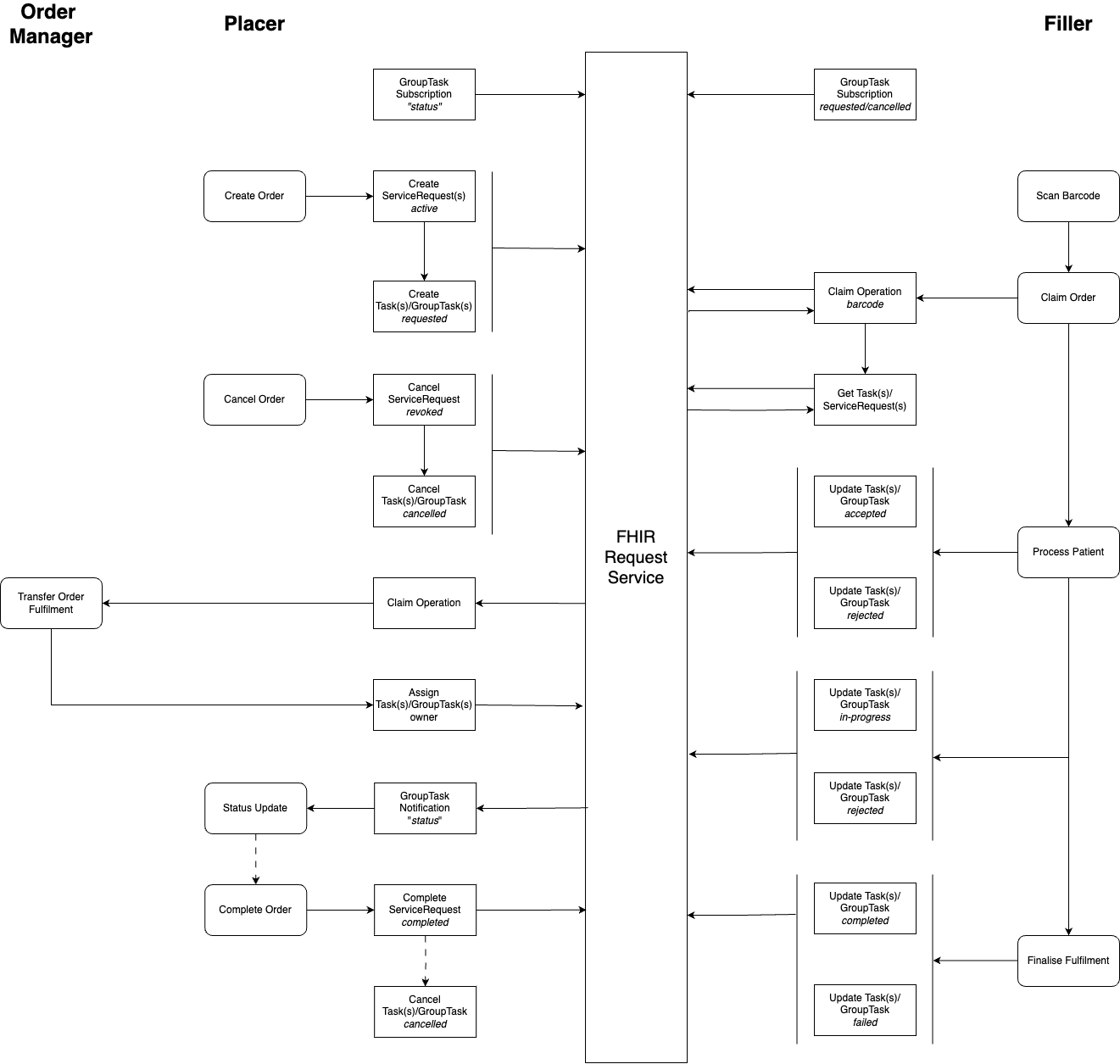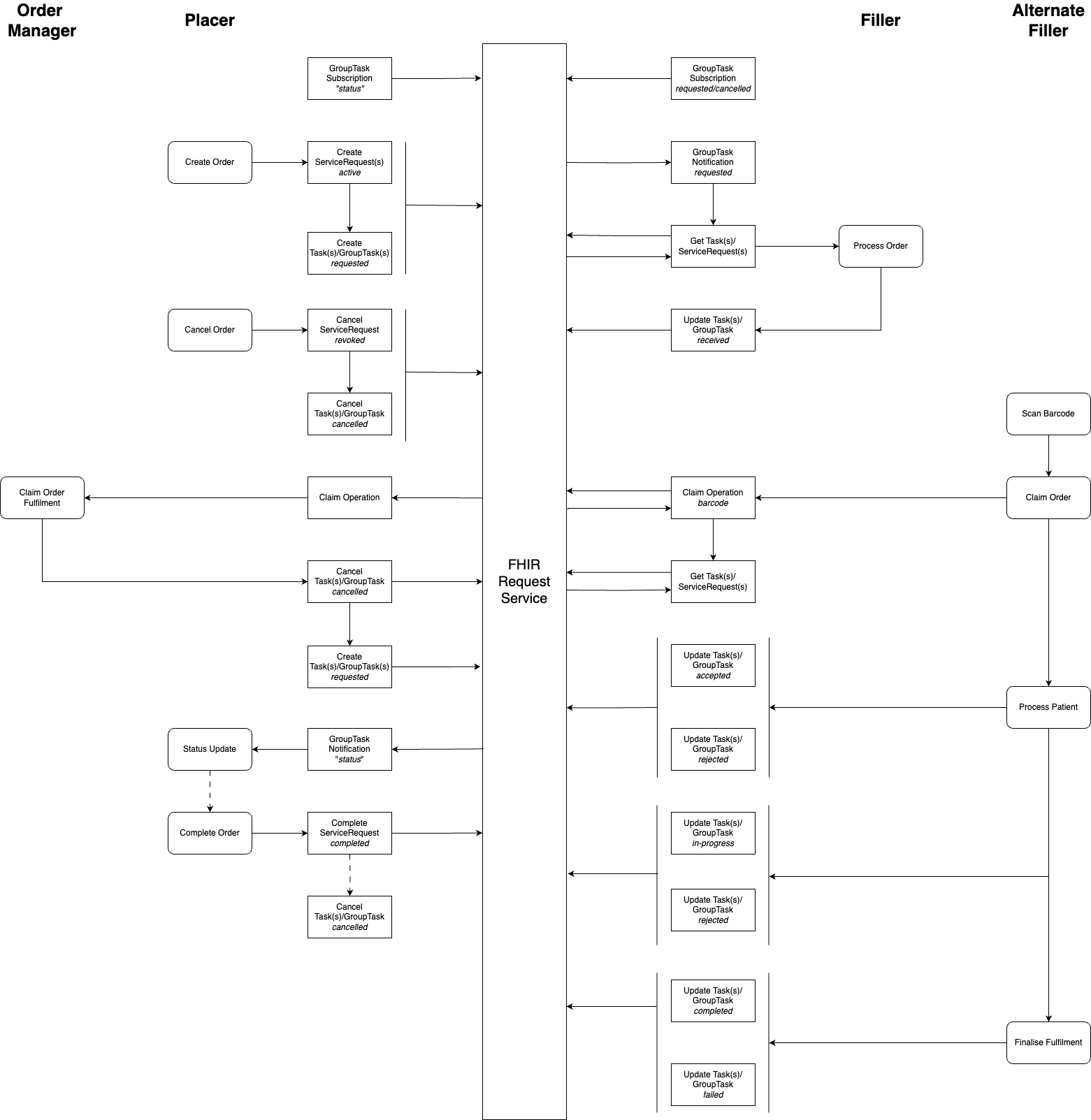Diagnostic Requests
0.0.9 - CI Build
Diagnostic Requests
0.0.9 - CI Build
Diagnostic Requests, published by Special Committee or Project or Initiative or Collective. This guide is not an authorized publication; it is the continuous build for version 0.0.9 built by the FHIR (HL7® FHIR® Standard) CI Build. This version is based on the current content of https://github.com/hl7au/draft-diagnostic-orders/ and changes regularly. See the Directory of published versions
This IG supports three basic workflows for the creation, assignment, and fulfilment of diagnostic requests.
In an Early Patient Choice order, the Task.owner is assigned to the selected provider at the point of order creation. This assignment is optional and if created will allocate the fulfilment task for a request to a provider. This duplicates existing market behaviour.
It is the responsibility of the placer system to manage the fulfilment tasks for requests. While the filler will update their fulfilment tasks, the placer will ensure that fulfilment tasks are appropriately cancelled. For instance in the following Early Patient Choice diagnostic order flow, tasks are cancelled when the order is cancelled or if a request is prematurely completed.

In a Late Patient Choice order, no Task.owner is assigned at the time of order creation. Instead, the Task is assigned to the provider which scans the barcode. They then use the claim operation to request assignment of the request fulfilment tasks and then have subsequent access to the request. This approach requires the filler system to process the discovery of a request in near real-time as opposed to an Early Patient Choice requests where the filler may receive the order hours or days before the patient attends the service delivery point.

A transferred order is similar to an Late Patient Choice order except the original order provider has to have their fulfilment tasks cancelled as they are no longer the chosen service provider. In theory, transfer should only happen once at the point where a patient attends an alternative service but there may be circumstances where multiple re-assignment is required. This is not a constraint of the design. The transfer is achieved using the same claim operation as that used for an Late Patient Choice request.
